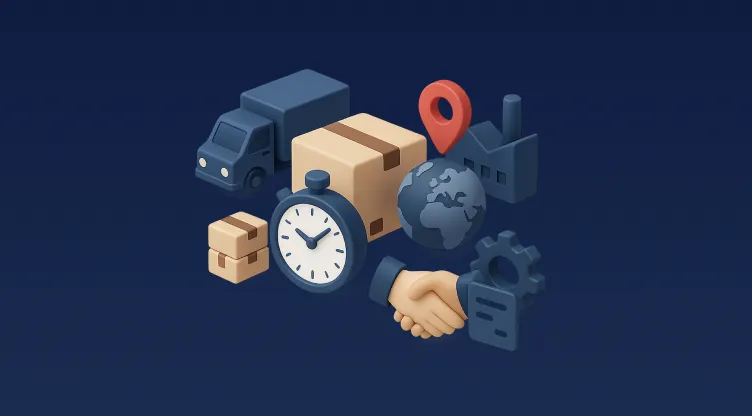The Busy Bee Summary
Don’t have time to dive in? Here’s what you need to know:
Returns are an unavoidable part of modern commerce. But handling them well can unlock operational excellence and improve customer satisfaction. Creating dedicated warehouse zones for returns sorting, triage, and refurbishment is a smart way to streamline reverse logistics. When paired with a strong warehouse management system, these zones boost efficiency, reduce errors, and recover more value from returned stock. This guide walks you through how and why to set them up — and the technologies that power them.
Why Warehouse Returns Matter More Than Ever
In the age of same-day delivery and hassle-free returns, the post-purchase experience has become a key battleground for customer loyalty. In the MENA region, particularly in the GCC where e-commerce is expanding rapidly, returns logistics can make or break brand reputation.
Customers now expect their returns to be processed quickly and fairly. But most warehouses were built for outbound fulfilment — not the messy, unpredictable nature of returns.
Enter the Returns Sorting Zone — a game-changer that separates return flows from general inventory to simplify triage, refurbishment, and reintegration.
What Is a Returns Sorting Zone?
A Returns Sorting Zone is a dedicated space within a warehouse specifically set up to handle returned items. These zones typically include:
- Triage Stations: For inspecting, grading, and categorising items.
- Refurbishment Areas: For cleaning, repackaging, or light repair.
- Quarantine Shelves: For items awaiting review or quality checks.
- Decision Points: For directing goods to resale, recycling, donation, or disposal.
These zones act as a buffer between customer returns and restocking. When supported by a smart warehouse management system, they become an efficient engine of value recovery.
Why Your Warehouse Needs This Now
Boost Efficiency, Cut Confusion
Without a dedicated area, returns pile up wherever space is free — leading to misplacement, stock inaccuracy, and poor visibility. A defined returns zone avoids bottlenecks and creates workflow clarity.
Unlock Inventory Value
Many returned items are still in resale condition. With fast inspection and light refurbishing, these can be resold — preventing unnecessary losses.
Improve Decision-Making
Whether an item is fit for resale, refurbishment, or rejection — a clear triage system helps warehouse staff take the right action faster.
Enhance Compliance and Customer Experience
In regulated industries like pharma or electronics (common in UAE and Saudi Arabia), managing expired or faulty goods properly isn’t optional — it’s a requirement.
How a Warehouse Management System (WMS) Makes It All Work
A warehouse management system isn’t just about tracking stock. It’s the nerve centre that enables automation and transparency across your warehouse — including returns.
Key Warehouse Management System Functions That Support Returns
- Real-Time Inventory Updates: Ensures returned stock is reflected instantly across all sales channels.
- Inspection and Grading Workflows: Tag and track items based on condition for easier decisions.
- Quarantine Zones in WMS: Hold questionable items until decisions are made.
- Item-Level Traceability: Track by batch, lot, or serial number — especially important for expiry-sensitive goods.
- Mobile Support: Staff can scan, sort, and tag returns using handheld devices right at the returns zone.
- Refurbishment Routing: Send items automatically to refurbishment or re-kitting workstations based on condition.
This level of integration is especially vital for businesses in fast-paced sectors like Quick-Commerce, where return speeds affect stock levels, availability, and customer promises.
Warehouse Management System Examples That Get It Right
Omniful, a Riyadh-born tech startup, offers a cloud-native WMS built for MENA logistics realities. It includes:
- Zone Management for Returns
- Triage and Grading Capabilities
- Integration with eCommerce Platforms for Real-Time Refunds
- Support for BORIS (Buy Online, Return in Store)
- Refurbishment Support for D2C brands
Case in point? D2C lifestyle group Laverne in Saudi Arabia shortened its return-to-restock cycle to under 48 hours by leveraging Omniful's returns capabilities.
Practical Tips for Setting Up Returns Sorting Zones
If you're ready to optimise returns in your own warehouse, start with these best practices:
- Designate a Clear Space: Physically separate returns from outbound workflows.
- Standardise Triage Steps: Create a checklist for return inspections.
- Label Everything: Use barcodes or QR codes to track item condition and next steps.
- Use Visual Aids: Posters, coloured bins, and signage help staff identify zones and reduce training time.
- Train Your Team: Make returns handling a part of your onboarding — not an afterthought.
What Happens Without This?
- Stockouts due to miscounted returns
- Customer service complaints due to refund delays
- Regulatory risks from improperly stored returns
- Lost value from salvageable items left too long
The result? Lost sales, lost trust, and operational waste.
See Omniful in Action
Whether you run a 3PL hub, a retail dark store, or a D2C brand, having an intelligent return management workflow matters. With Omniful, you can create powerful return sorting zones that talk to your sales channels, WMS, and even refurbishment partners.
✅ Real-time visibility
✅ Automated workflows
✅ Faster refund triggers
✅ Higher resale recovery
Want to streamline returns? Request a demo today.
FAQs About Warehouse Returns Sorting Zones
Do I need a large space to create a sorting zone?
Not at all. Even a 20m² section can make a difference if well-organised.
Can I automate return grading?
Some parts can be automated using barcodes and scanning apps, but human judgment is still key for quality control.
How do I track refurbished stock?
Use your WMS to assign a new SKU or condition tag and place it back into inventory under a separate “refurbished” category.
What does BORIS mean in warehouse terms?
Buy Online, Return In Store — this omnichannel method requires your system to sync returns data across platforms in real time.
























